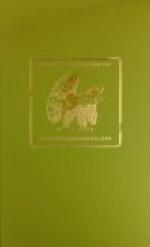Tisdale paused to draw his hand across his eyes and met Foster’s look over the table. “It was there I blundered. There was a plain traveled trail from that mine down through the lowlands to Susitna, and I failed to see that his tracks left it: they were partly blotted out in a fresh fall of snow. I lost six hours there, and when I picked up his trail again, I saw he was avoiding the few way houses; he passed the settlement by; then I missed his camp-fire. It was plain he was afraid to sleep any more. But he knew the Susitna country; he kept a true course, and sometimes, in swampy places, turned back to the main thoroughfare. At last, near the crossing of the Matanuska, I was caught in the first spring thaw. It was heavy going. All the streams were out of banks; the valley became a network of small sloughs undermining the snowfields, creating innumerable ponds and lakes. The earth, bared in patches, gave and oozed like a sponge. It was impossible to follow Weatherbee’s trail, but I picked it up once more, where it came into the other, along the Chugach foot-hills. Slides began to block the way; ice glazed the overflows at night; and at last a cold wave struck down from the summits; the track stiffened in an hour and it was hard as steel underfoot. The wind cut like swords. Then came snow.”
Tisdale looked off with his far-sighted gaze through the open door. Every face was turned to him, but no one hurried him. It was a time when silence spoke.
“I came on Weatherbee’s dogs in a small ravine,” he said. “They had broken through thin ice in an overflow, and the sled had mired in muck. The cold wave set them tight; their legs were planted like posts, and I had to cut them out. Two were done for.”
“You mean,” exclaimed Banks, “Dave hadn’t cut the traces to give his huskies a chance.”
Tisdale nodded slowly. “But the instant I cut Tyee loose, he went limping off, picking up his master’s trail. It was a zigzag course up the face of a ridge into a grove of spruce. Weatherbee took a course like a husky; location was a sixth sense to him; yet I found his tracks up there, winding aimlessly. It had stopped snowing then, but the first impressions were nearly filled. In a little while I noticed the spaces were shorter between the prints of the left shoe; they made a dip and blur. Then I came into a parallel trail, and these tracks were clear, made since the snowstorm, but there was the same favoring of the left foot. He was traveling in a circle. Sometimes in unsheltered places, where the wind swept through an avenue of trees, small drifts covered the impressions, but the dog found them again, still doubling that broad circle. Finally I saw a great dark blotch ahead where the ground sloped up to a narrow plateau. And in a moment I saw it was caused by a great many fresh twigs of spruce, all stuck upright in the snow and set carefully in rows, like a child’s make-believe garden.”




